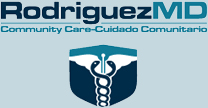The Salt Shaker- Friend or Foe?
The table salt in our salt shakers is a combination of the minerals sodium and chloride. Salt is commonly used as a seasoning when foods are prepared and eaten. Unfortunately, the amount of sodium that typical Americans consume in their diets is becoming a health issue for many. The U.S. Food and Drug Administration recommends that no more than 2,300 milligrams of sodium be consumed per day. Certain groups of people, including those with high blood pressure, diabetes, and kidney disease, should limit their intake to 1,500 milligrams of sodium per day. Children and adults over the age of 50 also need less sodium. Diets that are high in sodium put people at risk for developing hypertension, heart disease, kidney stones, and osteoporosis.
 Sodium occurs naturally in some foods and is added to many others as a seasoning. Sodium is often hidden in foods we regularly eat. It is easy to exceed recommended daily sodium limits without even realizing it. Many canned and processed foods contain high levels of sodium. These high sodium foods include soups, cold cuts, hot dogs, bacon, pizza, cheese, olives, pickles, chips, pretzels, and crackers.
Sodium occurs naturally in some foods and is added to many others as a seasoning. Sodium is often hidden in foods we regularly eat. It is easy to exceed recommended daily sodium limits without even realizing it. Many canned and processed foods contain high levels of sodium. These high sodium foods include soups, cold cuts, hot dogs, bacon, pizza, cheese, olives, pickles, chips, pretzels, and crackers.
There are other foods that we might not suspect of having high sodium levels, because they don’t taste particularly salty. However, they fall into the high sodium category as well. Such foods as salad dressings, marinades, barbecue sauce, tomato based condiments and sauces, salsa, bread, bagels, cereal, cottage cheese, and processed baked goods are high sodium culprits. In addition, poultry can be loaded with sodium. Chicken and turkey are often injected with a salt or brine solution to enhance flavor.
Restaurants are another source of high sodium foods. Fast food restaurants, with lots of fried options, are especially bad. Sadly, other types of restaurants are often no better. Sauces, gravies, and salad dressings are often hidden sources of sodium. Ask for these on the side and use sparingly.
What are some healthy foods that are naturally low in sodium? Good choices are fresh fruits and vegetables, dried beans, lentils, oatmeal, pasta, rice, and unsalted nuts. Learn to read food labels when shopping, and choose reduced sodium or “no salt added” foods. Season foods with other spices instead of salt. To avoid temptation, take the salt shaker off the table.




